Security zones are regulated by special regulations, standards and rules for the use of resources. For water intakes, conduits and water pipelines, there are special sections of SanPiN, which include environmental and sanitary and hygienic rules. In particular, the SanPiN 2.1.4.1110-02 document regulates the operation of a water pipeline located in a protected zone. The prescribed rules have a legal form and apply to all citizens, as well as legal entities.
What is a security zone?
With regard to the water supply, security measures aim to implement a set of measures aimed at minimizing resource pollution. This may refer to different types water networks and channels - including underground, surface and artificial. At the same time, there is a classification of zones according to belonging to different belts. For example, the first belt covers water intake facilities, water supply channels and platforms. plumbing structures. It is designed to prevent the risks of intentional or accidental damage to structures and direct water pollution. The second and third belt zones are also called restricted areas. These are places where measures are in place to prevent pollution of water sources. At the design stage, a list of protective measures is prescribed for the sanitary protection zones of water supply sources. As a rule, they are guided by the development and implementation of rules aimed at maintaining the optimal chemical and biological condition of water supply channels.
Factors for determining the protection zone
One of the key factors is the distance of pollution spread. It is defined by the following parameters:
- Type of water supply source (underground or surface).
- The level and potential of natural protection against pollution.
- Characteristics of pollution - biological, chemical and microbial.
- hydrogeological conditions.
When developing a project and determining the boundaries of a particular zone, specialists also take into account the current composition of the water and the time required for the survival of unwanted microorganisms in it. The chemical processes in the environment served by the water supply are also taken into account. Secured territory also characterized by temperature indicators, adsorption and physical processes. Together, these and other characteristics make it possible to determine the optimal boundaries for a protected area with the assignment of the status of a belt to it.
What is protected water supply?
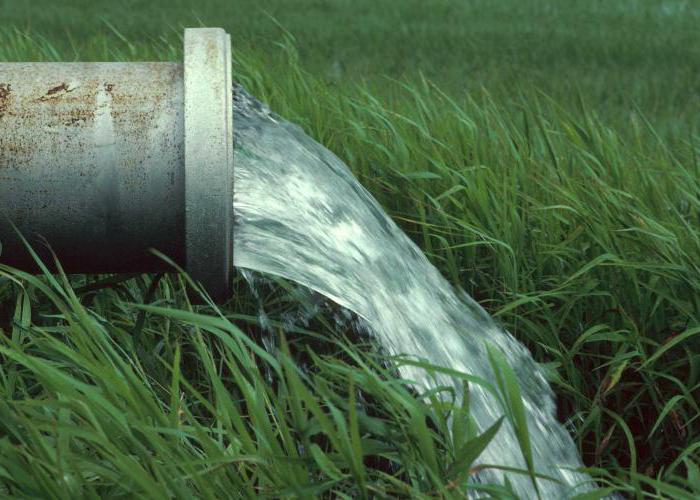
Despite entering the buffer zone, the water supply is not an object of the reserve without a practical functional purpose. Technically, it fulfills its primary tasks of water supply to consumers. The purposes of such water supply can be technical, household, industrial and food. The water supply complex includes engineering communications, pumping stations, purification, pressure and filtration facilities. Depending on the source of supply, closed underground tunnels with pipes, surface open flumes and tanks for temporary or permanent water storage can be used. Again, the zones of sanitary protection of water supply sources are initially designed taking into account the technical part of the implementation of the facility. Design solutions are calculated for more efficient use of the resource, as well as the characteristics of the equipment used. For pipelines, materials such as steel, asbestos and reinforced concrete, and in some cases wood can be used.
Types of water pipelines of the buffer zone
There are local local and main water pipelines located in the protected area. As a rule, belonging to one of these categories is determined by the potential of the source in terms of volumes of water supply. In accordance with this characteristic, the surrounding arrangement of the territory of the buffer zone is also carried out. engineering communications. In addition, a distinction is made between pressure and non-pressure water pipelines. A security zone with communications of the first type involves the inclusion of pumping equipment in the infrastructure or the use of local dams. In the case of non-pressure or gravity water pipelines, the resource is delivered by gravity. This allows you to save on electricity, but there are problems with flow regulation.
Protective measures for underground sources
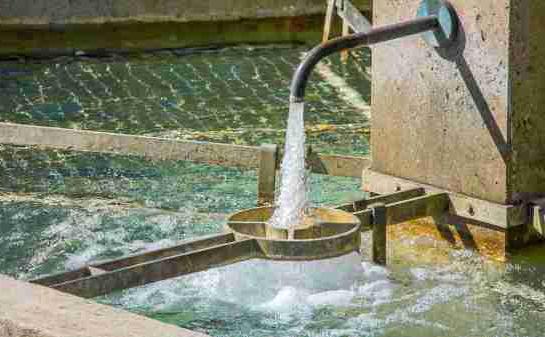
If the object is located in the first security zone, then protective measures are mainly focused on the elimination of negative impacts on drinking water from manholes, wells and overflow pipelines. Water intake points are equipped with automated control of the composition of water and equipment that regulates the parameters of the water supply system. As regards the second and third belts, one of the main tasks is plugging, detection and, if possible, restoration of old or misused wells. The drilling of new wells is also envisaged, but only upon agreement with the sanitary and epidemiological supervision authorities. There are a number of strict prohibitions that are aimed at the chemical and physical protection of the water supply. The security zone in these belts implies a ban on the placement mineral fertilizers, chemicals and fuels and lubricants.
Protective measures for surface sources
Descending restrictions apply to the first guard belt Wastewater transport, washing, bathing and organizing a watering place for livestock. It also introduces a ban on other types of water use that affect its qualitative composition. In the case of navigable reservoirs located above water inlets, buoys with a lighting system are placed. The water area is fenced with buoys and warning signs. More stringent measures apply to the second and third belts, in which the water supply protection zone is located. The rules, in particular, regulate the allocation of territories for the construction of agricultural, residential and industrial facilities. A complete ban on such projects is not introduced, but in the process of coordination, the risks of the impact of the activities of future facilities on the characteristics of the protected resource are taken into account. In addition, it is not allowed to discharge sewage in the water intake zone if they do not meet sanitary requirements.
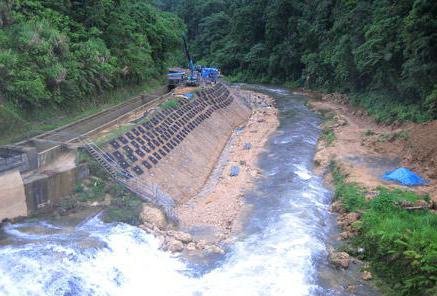
Within the water area, all activities related to the extraction of gravel and sand are prohibited. Depending on the results of the hydrological calculation, a ban on excavation in the security zone of a water supply system operating from surface sources.
Protected zone boundaries
To begin with, it is worth noting that within the zone there are different boundaries depending on the belt. So, the first belt can extend to minimum distances from 10 to 30 m in a radius, depending on the technological structure. For example, the distance from the water tower is at least 10 m, and the filters and control tanks operate at a distance of at least 30 m from the border. In turn, the sanitary protection zone is formed around the water supply protection zone. How many meters is it? It depends on the diameter of the conduit - for example, with a standard size of 100 cm, the indent will reach 10 m, and a diameter of more than 100 cm will determine the border distance by 20 m. Again, we are talking about minimum distances. Depending on other parameters of communications and operating conditions of the zone, these indicators may change upwards.
Area for the sanitary strip
Within the borders of the sanitary belt, construction and economic consumption of water resources are strictly regulated. In this zone, initially there should not be sources with dirty water, which may have an impact on protected water supply channels. Therefore, before organizing this strip, geodetic studies are also carried out with an analysis ground water and soil cover. As well as the construction of a water supply system in the buffer zone, severe restrictions are introduced on the territory for the development of new agricultural and industrial facilities. It is also prohibited to organize landfills, filtration and sewage fields.
Location of drains in relation to the buffer zone
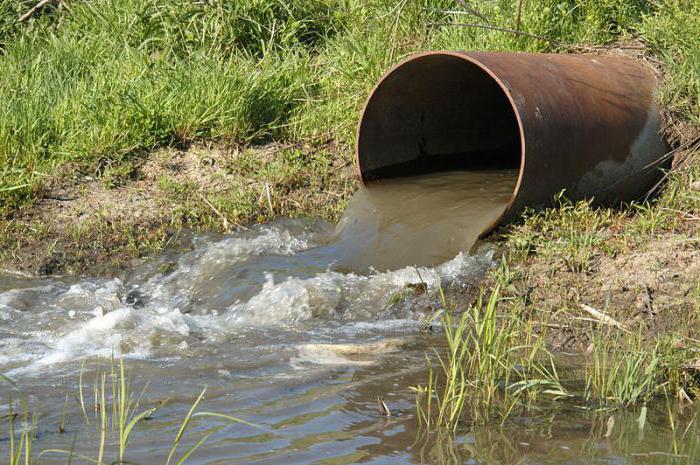
It has already been noted that objects of various purposes that do not pollute water supply sources can be located near protected zones. But in this case, the regulation of effluents and the operation of the sewer channels of these objects are inevitably required. In accordance with the regulations, buildings must be provided with sewage disposal channels to local receivers. treatment facilities or industrial sewer. Regardless of the method of liquidation of wastewater, the relationship between the protection zones of water pipes and sewers is regulated separately. The dimensions of zones with a radius relative to the source of 30-50 m should not be affected by waste from buildings located in the near area. If there is no possibility of third-party sewage disposal in compliance with sanitary and hygienic standards, then the facilities must be equipped with waterproof waste receivers.
Requirements for the characteristics of water in sources
To maintain the optimal state of water in a protected area, regular analysis of its composition is required. In particular, there should be no oily oil films on the surface of the water. In the case of water intended for drinking or domestic needs, the volume of suspended particles should not exceed 0.25 mg per 1 dm3. Separately, the oxygen content in dissolved form is also calculated - not less than 4 mg per 1 dm 3. Methods for visual assessment of the quality of drinking water are also used. So, for example, the color of the water column should not appear at 20 cm. Data for such analyzes are obtained directly from the water supply. The buffer zone is subject to similar studies in accordance with the schedule provided for in the project. Although in the future, depending on changes in the operating conditions of the facility, the regularity of analyzes may vary.
Regulation of the laying of pipeline networks
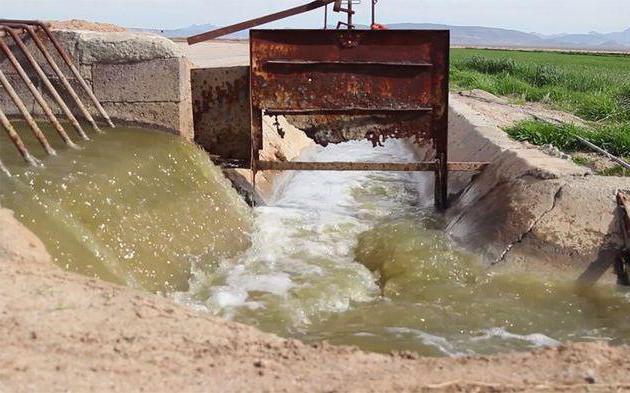
Pipelines for water supply systems are usually focused on serving a clean environment with minimal inclusion of foreign elements. Therefore, in case of compliance with sanitary and hygienic standards, the laying of water pipes is allowed in the first zone of protected areas. But, again, after a thorough study of the sources and consumers with whom he will have to work.
There are also prohibitive measures that completely exclude the organization of third-party networks within protected areas. First of all, it concerns the laying of water pipes for main networks, regardless of the purpose. The same rule applies to other communications that interact with cleaning, industrial or agricultural facilities.
Conclusion
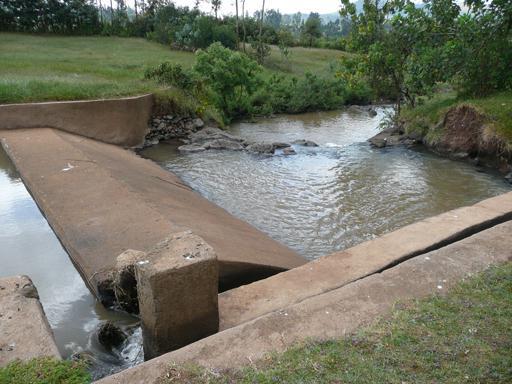
The rules for the regulation of protective measures in the area of operation of a protected water supply system are based on the motives for maintaining the purity of the water resource. The above requirements and restrictions justify themselves in terms of environmental, sanitary and biological safety of consumers. Therefore, it is quite logical that in the water supply protection zone it is prohibited to place construction objects that can contribute to the pollution of the water resource. The same applies to other restrictive measures. But at the same time, the developers of regulatory documents are striving to expand the technological possibilities of using protected sources. This is helped by the modernization of operating equipment, the introduction of new systems for regulating water supply and modern ways water purification.
Domestic sewage poses a danger to water supplies and environment. That is why such a thing as a security zone of sewerage networks appeared. The SNiP specifies the size of the protected area and designation parameters. This area serves not only to protect water and soil, but also to protect the sewer pipeline from damage.
Therefore, construction, planting trees and other works are prohibited in the buffer zone. Sometimes you can see a sign with the inscription that a security zone is located here, for example, an electric cable. Any kind of earthwork is prohibited in this zone.
The sewer security zone, unlike communication cables or electricity, for some reason does not have a visual designation. Perhaps this is a consequence of the shortcomings of legislators, but the law provides for liability for damage to sewer systems (Article 7.7 of the Code of Administrative Offenses) in the form of substantial fines. And if damage sewer system leads to contamination of the soil or drinking water, it is possible to open a criminal case against the perpetrator of the accident.
The general concept is the security zone of sewerage networks
A security zone is a territory surrounding any communications, in our case -. Within this territory, you should not perform such actions as:
- planting green spaces;
- storage of building materials;
- waste storage;
- earthworks - pits, trenches, etc. ;
- cutting or backfilling of soil;
- construction;
- unauthorized construction of the roadway, even temporary from concrete slabs;
- obstruction of free passage to communications.
The boundary of the buffer zone is determined by the Ministry of Environmental Protection, and the exact data can be obtained from the local department responsible for wastewater disposal.
Guard zone size
Knowledge of regulatory requirements will be required during the installation of the sewer system. Owners of private houses often perform such work on their own, but this does not exempt them from complying with the rules and regulations regulated in.
The SNiP indicates general rules and requirements, to determine more precise boundaries, you should contact the local administration. The security zone of any sewer, whether pressure or gravity, is limited to five meters on each side of the pipeline.
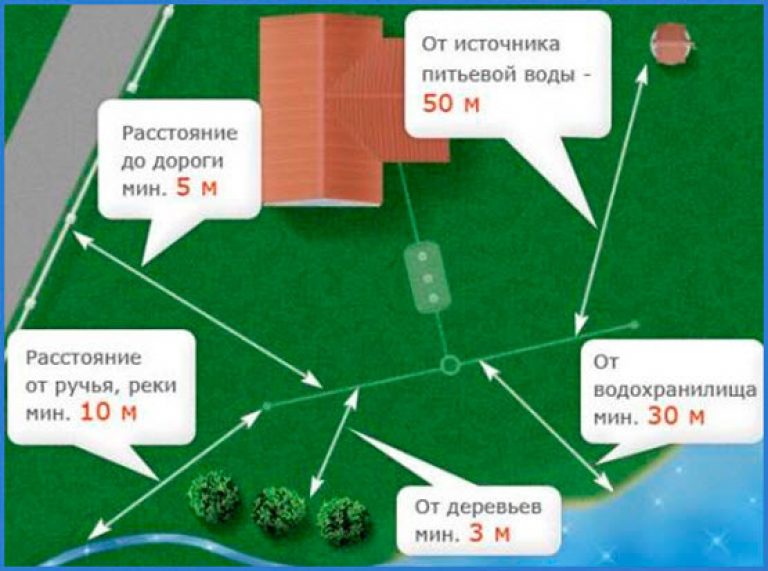
The distance is measured from the sides of the pipe. The rules also spell out special conditions under which the size of the security zones increases to 10 meters in each direction.
TO special conditions applies to:
- seismically dangerous areas;
- regions with low air and soil temperatures;
- areas with wet and weak soils.
Distance to water sources
If the pipeline is damaged outdoor sewerage spilled runoff can get not only into the soil, but also into water sources. Therefore, the SNiP provides not only restrictions on the location of sewer systems from roads, buildings, etc., but also at what distance the drainage should be from rivers, lakes, water supply.
Must pass no closer:
- 250 meters from rivers;
- 100 m. from the lake;
- 50 m from an underground source;
- 10 meters from the water supply with a pipe diameter of up to 1 m, with a diameter of more than a meter - 20 m;
- 50 meters, regardless of diameter, if the soil in the area is waterlogged.
On a note! In order to avoid errors in determining the security and sanitary zone sewers, increase the distance by 10% of the normative.
How not to damage the sewer system
All earthworks must begin with a careful inspection of the area. If there are no prohibition signs around, you can determine the presence of a sewer pipeline by the presence of a well on which a hatch with the letter “K” is installed.
Also, do not neglect the appeal to the local administration for a plan of communications taking place in a particular area. To work in a protected area, you must contact the appropriate operating company for a written permit. Without such permission, any actions in the area of the passage of sewer systems are illegal.
What is the risk of breaking the rules?
Damage to sewer systems occurs more often than water pipes or electrical cables. These accidents do not occur because of inattention, but because it is not always clear where the pipe was laid. As mentioned above, it's all about the flaws in the laws.
After the laying of electricity or water, the organization responsible for the maintenance and operation of these networks is obliged to install warning signs. While the installation of warning signs when laying a sewer pipeline is not provided.
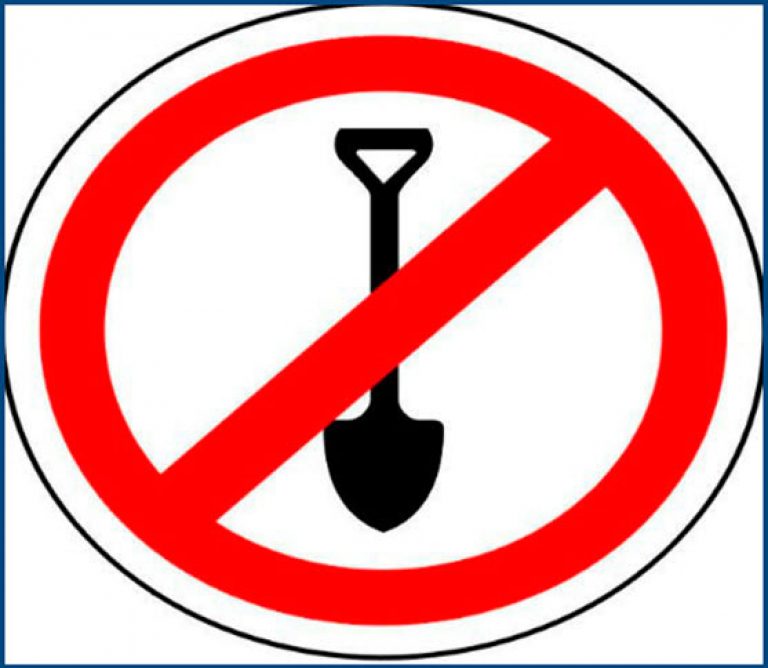
It turns out that the owner of the sewer is not required to report the presence of a security zone. Therefore, the responsibility for damage to the external sewerage will lie with:
- operating company - if there were no warning signs;
- the foreman of the work - if there were signs, but they were ignored.
If the network is damaged, the culprit will be held administratively liable in the form of a fine, and if the environment is damaged as a result of the accident, then the punishment will be stricter.
Video: water supply and sewerage security zone
Any sewerage system is a potential hazard to drinking water sources and the environment. Therefore, there is such a thing as a sewerage security zone - snip determine the size of the territory and the standards for its designation. It is prohibited to build, plant trees and perform a number of other works in the protected area. Consider what rules for equipping security zones today are accepted in construction.
Surely, many have seen the installed signs, which indicate that a protected zone is located in this place. Such plates are placed, for example, in places where electrical cables are laid. In the area covered by the established plate, it is strictly forbidden to carry out unauthorized land work.
There are also security zones for water supply and sewerage. They are designed to address two issues:
- For the purpose of environmental protection.
- To protect pipelines from damage.
General concept of the sewer protection zone
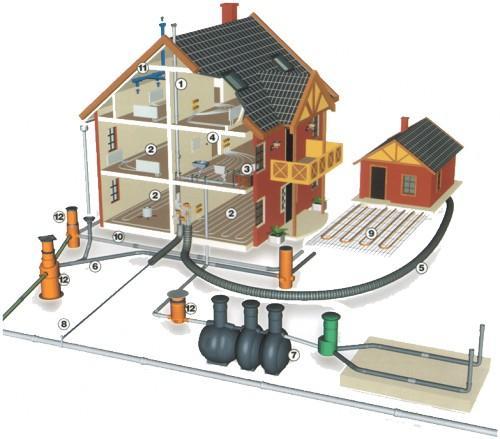
Sewerage protection zones are the territories that surround the buildings of sewer networks. Within the sewer zones, the following actions should be refrained from:
- Planting trees;
- Digging trenches and pits;
- Storing firewood or any other materials;
- Landfill device.
- Planning the construction of some buildings, piling or blasting.
- Carrying out work that raises or lowers the level of the soil, that is, the production of sections of the soil or its backfilling.
- The device of the road surface reinforced concrete slabs, even if this road is temporary.
- The performance of any actions, as a result of which the passage to the sewer networks will be blocked.
As a rule, the boundaries of protected zones are prescribed in a decree issued by the Ministry of the Environment. Exact information about the size of the protection zones can be obtained from the local water utilities.
What is the risk of not following the rules?
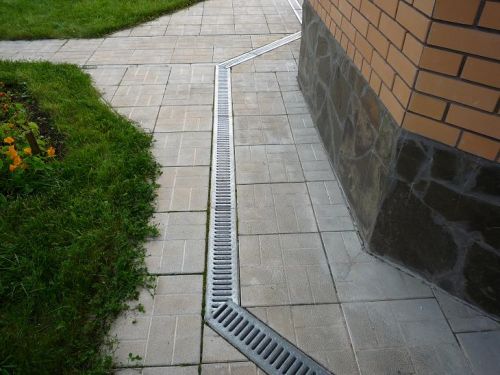
It must be said that cases of damage to the sewer pipeline due to land works are not so rare. They happen even more often than damage to water pipes or power cables.
Random accidents are due to the fact that the work foreman simply does not know that a pipeline passes here. The point here is some discrepancy between the laws. So, for example, when laying power lines or building water pipes, the operating organization is obliged to install warning signs.
But the obligatory installation of a sign warning that a sewerage security zone is located here has not been regulated by law. That is, there is no clear indication that the owners of sewerage networks must mark the location of the buffer zone with signs, in the law.
Thus, if as a result of some work the sewer pipeline was damaged, then the responsibility will be borne by:
- In the absence of a warning label - the operating organization.
- If the sign was present, but was ignored, then the responsibility lies with the contractor.
For damage to sewerage networks, the culprit bears administrative responsibility. If the accident caused damage to the environment, then the measure of responsibility will be different.
Advice! Before carrying out earthworks or other potentially dangerous work for the pipeline, it is necessary to study the area. Information on the location of sewer protection zones can be obtained from an organization that maintains water and sewer networks.
Sizes of sewer protection zones
Regulatory requirements regarding the size of buffer zones need to be known not only to the foremen. Indeed, today, quite often, homeowners build their own local sewer systems, while it is necessary to comply with accepted norms and parameters that are regulated by SNiPs.
Advice! Documents that regulate the rules for the construction of sewer systems:
- SNiP 40-03-99;
- SNiP 3.05.04-85;
- SNiP 2.05.06-86.
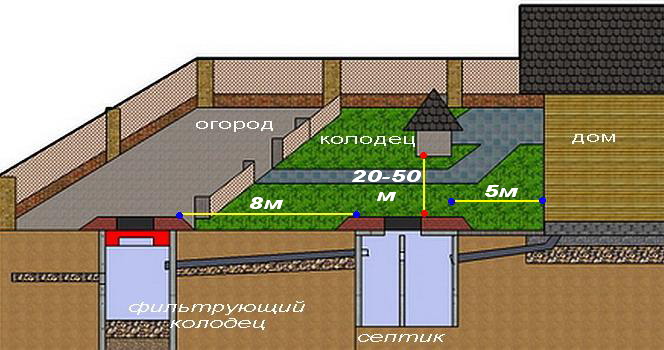
However, you should be aware that SNiPs are set only General requirements, the exact dimensions are set by local authorities. Under normal conditions, the security zone of gravity and pressure sewers is 5 meters on both sides of the pipe. The measurement is made from the side wall of the pipeline.
There are also special conditions that may affect the size of the protected zones, such conditions include:
- High seismic hazard;
- Extremely low temperatures in winter;
- Weak or overly wet soils.
Such difficult conditions the security zone is doubled and is 10 meters in each direction from the side walls of the pipe. Similarly, a security zone is established storm sewer.
Rules for the location of sewers in relation to water sources
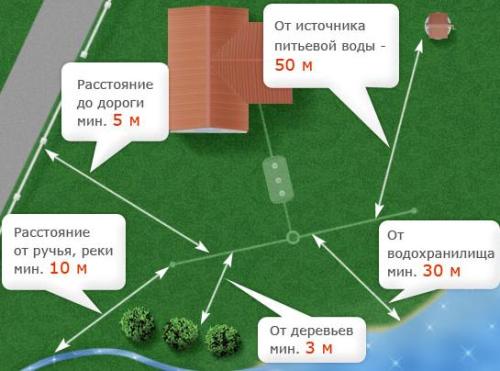
Since damage to sewer systems is a serious threat to the environment, there are strict rules for the placement of the sewer pipeline in relation to water sources.
The sewerage pipeline should be located at a distance:
- At least 250 meters from the river.
- At least 100 meters from the lake.
- At least 50 meters from underground sources.
- At least 10 meters from the water supply pipeline, provided that the pipe diameter is less than a meter. If the pipe diameter is larger, then the distance should be at least 20 meters.
- If the water supply is located in permeable or highly moistened soils, then the distance to the sewer pipes should be at least 50 meters, regardless of the size of the pipe.
Important nuances
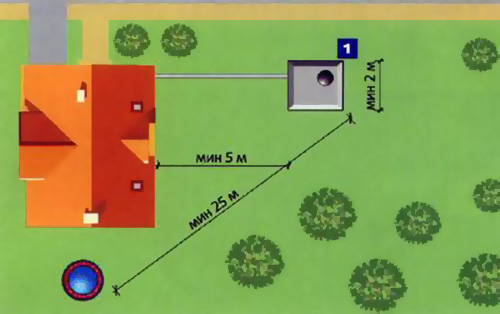
A careful study of the requirements of SNiP is important, both for those developers who are engaged in laying sewers, and for those who plan to carry out some work in a protected area. However, when studying SNiPs, one should not forget about the requirements of local legislation.
Of course, when it was approved, the same SNiPs were taken as the basis, however, there may be some nuances, non-observance of which can lead to trouble for the developer. Developers should take into account the fact that local legislation will still take precedence in legal proceedings.
If, according to the plan, the sewerage pipeline will pass near any buildings, then laying should be carried out at a distance from their foundation, provided sanitary standards. Reduction of this distance is possible only upon receipt of the written consent of the owner of the building to carry out the work.
Protected water supply zones
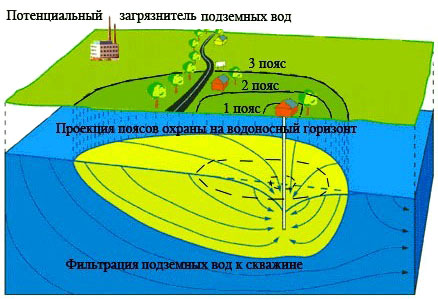
The protection zone of the water supply is being built in order to protect the source of drinking water from possible pollution. Therefore, during the construction of a water supply system, measures are taken that are aimed at eliminating situations that could lead to a deterioration in the quality of the water supplied.
Belts of the water protection zone
The sanitary water supply zone consists of three belts. The design of the zone must be coordinated with the sanitary and epidemiological service, the Vodokanal enterprise and other interested organizations.
- The first belt of the buffer zone is a circle centered at the water intake point and having a radius of 30-50 meters. If there are several sources, then you need to allocate several security zones.
Advice! If it is necessary to reduce the radius of the first security zone, it is necessary to contact the sanitary and epidemiological control service, since this issue is within the competence of this body.
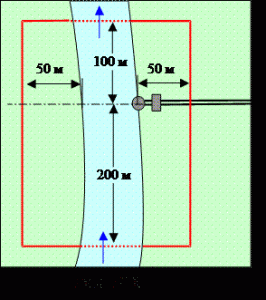
The width of the buffer zone along the pipelines through which water is transported is determined depending on the type of soil.
- If the pipeline is laid in dry soils, then the width of the protection zone is 10 meters in each direction if the pipe diameter does not reach 1000 mm, and 20 meters in each direction if a larger diameter pipeline is being built.
- When constructing a water pipeline in wet ground, the size of the protection zone is 50 meters in each direction, regardless of the diameter of the pipe used.
Advice! In the event that the water supply will pass through already built-up areas, then it is allowed to reduce the territory of sanitary zones after agreement with the SES services.
What should not be in the sanitary zone of the water supply?
In the sanitary protection zone there should not be:
- Latrine, manure storage, garbage bins and other sources of potential water pollution.
- It is forbidden to conduct water conduits through the territory of landfills, sewage filtration fields, irrigated agricultural fields, cattle burial grounds and cemeteries.
So, the water supply and sewerage protection zone is the territory allocated to protect pipelines from damage during earthworks. In addition, the sanitary zone of the water supply system serves to protect the source of water supply from pollution, and the sewerage protection zone is necessary to prevent pollution of the soil by sewage.
Forbidden zone - this inscription on the plate was met, perhaps, by everyone. But not everyone knows that such a territory is not only private property and nature protection zones, but also the area around the sewer. And the point here is not that the work carried out here can harm communications. The sewerage security zone is needed primarily in order not to harm human health and not harm the environment. That is what this article will be about.
Any sewage runoff carries a potential hazard to the environment and human health. This is due to the impurities that contain a large number of pathogenic bacteria and microorganisms. To minimize these risks, a protected zone should be allocated around any object associated with the sewerage system.
In such territories, according to the current norms and rules, certain actions should be limited. For example, in a protected area it is prohibited:
- Plant trees and other large green spaces.
- Carry out earthworks (dig holes and trenches). Of course, this rule does not apply to organizations servicing sewer communications.
- You can not arrange warehouses and store any valuables ( Construction Materials, fuel, and especially food).
- It is not allowed to build any buildings, especially residential ones.
- It is impossible to carry out any work using impact mechanisms closer than 15 m from sewer facilities.
- It is forbidden to change the level of the soil, erect dams, embankments, roads, etc. There are rules according to which it is forbidden to lay the subway at a distance closer than 20 m from the existing sewer collector. Of course, this applies only to large cities, but such a requirement speaks of the importance for the environment and human health of maintaining integrity. sewer pipes wires.
- Also, you can not build anything that can interfere with access to the communications of service companies.
Note! The decision to allocate territories for a protected zone is made by a representative of the relevant authorities. ABOUT decision must be communicated by means of a special decree. The size and location of such areas can be obtained from local organizations that maintain sewer communications.
The size of these areas depends on various factors. Among them are the depth of laying and the dimensions of sewer pipes, the features of the terrain and the purpose of communications (domestic or industrial sewage).
According to current legislation, organizations laying underground power lines or a water supply system must designate protected zones. But this rule does not apply to sewer pipelines. As a result of this mismatch, there are much more cases of breakthrough of such communications as a result of land works than in the case of electric lines and water supply.
But there will be no less problems with such a breakthrough. And here the point is not even that the organization operating the sewer system will have to spend resources on repairs. Breakthrough of such pipelines threatens to cause great harm to the environment, and, therefore, to human health.
Since the installation of a sign about the sewerage security zone is optional, the responsibility for damage to communications will be borne by:
- Organization that maintains the sewer system, in the absence of a sign.
- The organization that carried out the work, if the sign was installed and ignored. The same applies to private individuals.
Note! According to current regulations, for violations of the requirements prescribed by the protected sewerage zone, the perpetrator bears administrative responsibility. But do not think that if the sewer pipe is damaged, you will only face a fine. If a sewer spill brought great harm environment, the punishment will be much more severe.
If you decide to carry out any construction or excavation work, it is better to find out from the sewer service organizations in advance about the absence of protected zones at the work site. You will spend some time on the “search for truth”, but you will save yourself from possible large material losses in the form of a fine and compensation for damage.
The sewerage system ensures the normal functioning of the settlement. In addition, such communications are potentially hazardous to the health of citizens and the environment. In this regard, when working in a protected area, the following requirements must be observed:
- strictly comply with all requirements prescribed in the current regulations and rules;
- when performing any (permitted by the operating company) work in the protected area, ensure all measures to maintain the integrity and safety of sewer pipelines and systems;
- monitor the safety of all communication elements;
- provide free access to the sewer pipeline (remove snow, debris, etc.).
Note! If any work is to be carried out in the protected sewer area, a permit is required. Coordination takes place in the operating company. After completion of all the required work, a special commission is invited. She inspects the security zone and gives permission to hand over the work performed.
The size of the protected area
In order not to violate existing legislation and not to carry out work or construction in a protected sewer zone, it is worth knowing exactly their size. Such information will be useful not only for organizations, but also for individuals.
Note! many owners country houses make autonomous sewer systems on their sites. According to SNIP (building norms and rules), these structures are also subject to the requirements for a protected area. If your neighbor made autonomous system, then it is impossible to build any structure near it.
What are the dimensions of such zones? According to the current norms for the pressure sewer system, the protected area must be at least 5 m on each side of the side walls of the pipeline. The same rules apply to gravity systems.
But these SNIP requirements apply to normal conditions. In some cases, the distance from the pipeline to the end of the protected area can be changed:
- If the temperature of the ambient air or soil in the region is below the standard values (this applies to the northern regions of our country).
- There is an increased risk of seismic activity. In this case, the zone is enlarged. During tremors, there is a high probability of a pipeline rupture and sewage ingress into the environment.
- If the soil is weak or very wet. In sandy soil or swampy areas, a broken sewer can cause more damage, as runoff can penetrate deeper and farther from the pipe.
As a rule, if one of these conditions is fulfilled according to the characteristics of the area, then the protected zone is increased by 2 times. In such regions, nothing can be done within 10 m on each side of the walls of the sewer pipe. But in each case, it is better to find out more precisely from local authorities and organizations operating the pipeline.
Note! Exactly the same rules apply to the storm sewer system. Despite the fact that such systems are designed to collect conditionally clean effluents from precipitation, the standards for them are the same. The security zone must be at least 5 m on each side of the pipeline.
In addition, the laying of the sewerage system must comply with the standards relating to water protection zones. Since sewage can cause great harm to the environment, and primarily to biological life and the purity of water bodies, it is not allowed to place them near water protection zones. So, according to the current building codes and regulations, the following distances must be observed:
- from groundwater sources (well, well, etc.) - at least 50 m;
- from the shore of a lake, pond or other stagnant water body - at least 100 m;
- from the water edge of rivers and streams - at least 250 m.
In addition, one should pay attention Special attention when laying water supply systems close to sewer communications. According to existing regulations, in this case, it is necessary to observe certain distances. So, if the cross section of the pipe of the water supply system does not exceed 1 m, then they can be laid no closer than 10 m from sewer communications. In this case, it is necessary to take into account the characteristics of the soil.
Note! If the soil is moist or weak, then the distance between the water and sewer systems should not be less than 50 m, regardless of the diameter of the pipes used.
When laying a sewer system (including autonomous, serving a private house) in the zone of protection of water bodies, it is better to take existing regulations with a margin. For example, retreat from the shore of the lake is not 100 m, but 110. The fact is that very often there are discrepancies between the marking of protected zones of water bodies in nature and their schematic layout.
Video
You can learn about the secrets of laying sewer pipes if you watch the video:
Everyone has come across in life signs “Cable security zone” or “Sanitary protection zone of a reservoir”. But not even all builders know that there is also a sewerage security zone. At first glance, the question is logical: “What is there to protect?”. However, sometimes this ignorance can lead to backfire– both owners of private houses and officials of various assembly organizations. Read on to find out how to avoid this.
Damage to external sewerage networks is not such a rare phenomenon. And it occurs with a frequency even greater than on the mains of water supply, electricity or communications.
In this regard, earthworks producers - both legal entities and owners of private land holdings, digging trenches and foundation pits, have a greater risk of damaging the drainage system than other communications.
Because they do not know that in this place there is a security zone of sewer networks. What is it connected with?
The obligations of owners and operating organizations to install warning signs about the passage of underground cables or pipelines in a given place, the border of the sanitary zone of a reservoir are directly prescribed in the regulations. In the case of water management, this is the Water Code. In the rest - special laws and regulations.
And only for the sewerage system such requirements are not regulated. As a result - if other communications are damaged, but there was no warning information in this area - the one who did not install the sign is responsible. And the foreman is to blame if there was a corresponding plate, but he ignored it.
The situation with drainage pipelines is much more complicated. Here, for some reason, legislators have not established clear standards, and network owners are not required to somehow designate sewerage protection zones.
Nevertheless, from the point of view of the legislation, damage to sewer equipment is an administrative offense.
Note! The Administrative Code reads: “Article 7.7. Damage to objects and systems of water supply, sewerage, hydraulic structures, devices and installations for water management and water protection purposes
Damage to objects and systems of water supply, sewerage, hydraulic structures, devices and installations for water management and water protection purposes shall entail the imposition of an administrative fine on citizens in the amount of one thousand to one thousand five hundred rubles; for officials - from two thousand to three thousand rubles; for legal entities - from twenty thousand to thirty thousand rubles.
At the same time, it should be noted that the article speaks only about direct damage to systems and structures. If at the same time there were harmful effects on the environment, this will be another offense, perhaps not one. Yes, and the damage caused to the perpetrator will have to be compensated. So it is quite possible, doing your own thing, and not intending anything bad, to get into serious trouble.
Precautionary measures
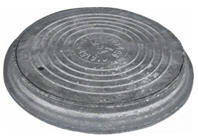
Given the possible negative consequences, it is worth trying to prevent their occurrence. If you are going to carry out earthworks, you should study the surrounding area.
The main sign of the presence of various sewers is manhole covers with a characteristic large letter "K". Coordinate plates or paint markings can also give it away.
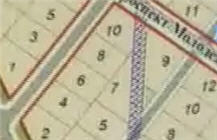
But even if they are not found, it is better to play it safe and contact the local water utility. There are diagrams of all sewer mains, which indicate whether or not a security zone of a sewer collector or other structure is located on a given site.
Moreover, in order to avoid subsequent inconsistencies, it is better to ask for a certified copy of the plan. If it turns out that the buffer zone is still present there, you can immediately apply for a work permit. Without such permission, it is impossible to carry out work near the sewer.
Protected zone sizes
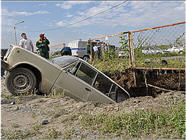
It is useful to know the regulatory requirements for the size of sewer protection zones not only in order not to accidentally damage pipelines. Indeed, often construction companies or homeowners organize their own. And at the same time, they are also required to comply with the established parameters. They are regulated by the requirements of several SNiPs.
Note! Documents regulating the rules for sewerage:
SNiP 40 - 03 - 99 "Sewerage, external networks and structures",
SNiP 3.05.04 - 85 * "External networks and water supply and sewerage facilities" and SNiP 2.05.06 - 85 " Main pipelines. Building regulations".
However, SNiPs set general standards, specific figures are set by local representative authorities - legislative assemblies, etc.
Under normal conditions, the pressure sewer protection zone is 5 m in each direction from the edge of the side wall of the pipe. The same applies to the gravity drainage system.
Special conditions affecting the size of sanitary protection zones include low average annual temperature in the region, high seismic hazard, weak and waterlogged soils, and other conditions specified in SNiPs. As a rule, in such cases, the POP increases to a distance of 10 m 5 m in each direction from the edge of the side wall of the pipeline.
In the same way, a storm sewer security zone is arranged.
Sewer protection
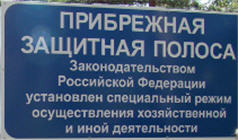
Sewerage is a source of increased risk of pollution for water pipes and water supplies. Therefore, not only buildings and roads must be carried away from it at a certain distance. Drainage networks also cannot be located closer than certain distances to water arteries.
And the numbers are impressive. Sewerage in the water protection zone should be located at a distance of at least: 250 m - from the water edge of the rivers, 100 m - from the lake shore, 50 m - from underground water sources.
Sufficiently stringent requirements are also imposed on the mutual arrangement of water supply and drainage pipelines. This is 10 m for a water pipe with a diameter of up to 1000 mm, 20 m for large diameters, and 50 m - if the pipes pass in wet soil, while the diameter does not play a role.
Advice! It is better to arrange sewerage in the zones of sanitary protection of water supply facilities with a distance margin of 10% or more from the regulatory requirements. It is not uncommon for the measurement data, and even the hole punching of the developer and the water supply organization, to differ. According to the data of the water utility, the sewerage system captures the territory where the security zone is established, but according to the builders, it does not. As a rule, the last word remains with the watermen.
Careful planning and accurate placement of the project on the ground should be given the closest attention. After all, the transfer of finished sewer network it will be very expensive anyway, and sometimes it is simply not technically feasible.
Its operation cannot be carried out categorically, since even this fact itself, even in the absence of an accident, is already an offense, and even if pollution of a water supply facility has occurred sewerage– it can even be about criminal liability.
Important nuances
Careful attention to the requirements of SNiPs is mandatory both for sewerage operators and for those who carry out any work or build objects in the sewerage buffer zone or its environs.
However, be aware of local laws. In general, it is based on the same SNiPs, but in some subjects it is possible own settings which may come as an unpleasant surprise.
You should refer to these documents (for example, for the capital, this is Decree of the Government of Moscow dated August 17, 1993 N 798 “On Approval of the “Rules for Using the Moscow City Water Supply and Sewerage Systems”), and take into account their requirements when performing work.
Often disagreements over the distance between the water conduit and the sewerage system arise due to the fact that according to “SNiP 2.07.01-89 * “Urban planning. Planning and development of urban and rural settlements” the regulated distance between the water supply and pressure sewerage networks and the foundations of buildings and structures is 5 m.
Many developers are guided by this figure, and come under fire from the sanctions of the water utility. The fact is that this SNiP indicates the minimum allowable distance. And the dimensions of the security zone of the highway are regulated by SNiP 2.04.02-84 and SanPiN 2.1.4.1110-02, and their dimensions are indicated above in this article.
Law enforcement practice shows that priority in the case of legal proceedings remains with the latest documents.
risk getting into difficult situation and those who lay a drainage pipeline near buildings and structures. In these cases, it must be performed from them at a distance established by the regulations borders of the sanitary zone, the reduction of this distance is possible only with the written permission of the owner of the object. And in this case, employees of local water utilities periodically try to find violations.








